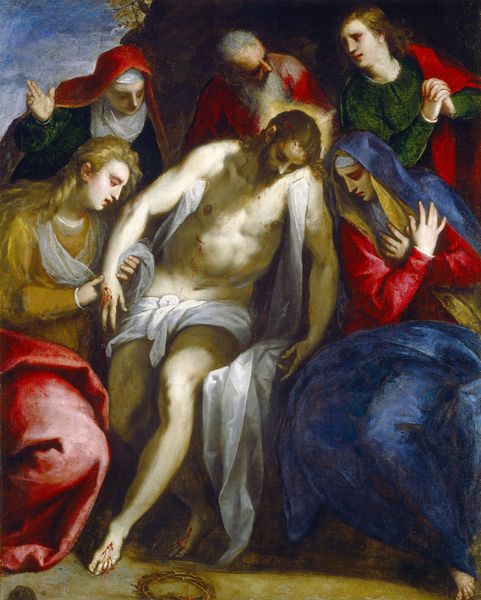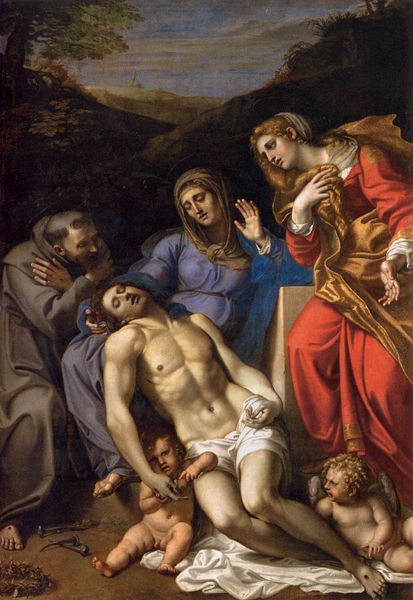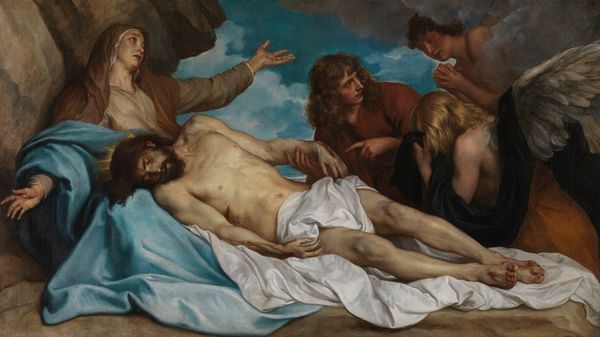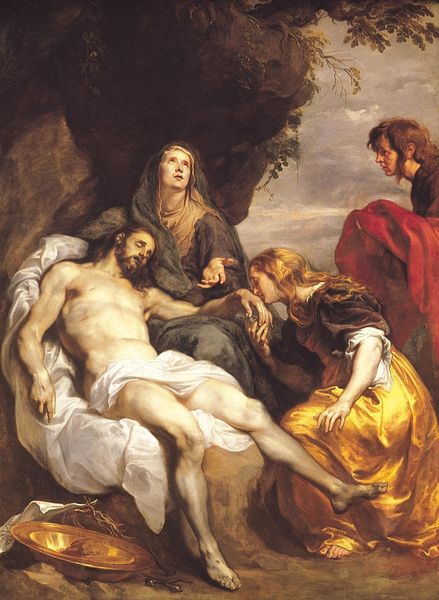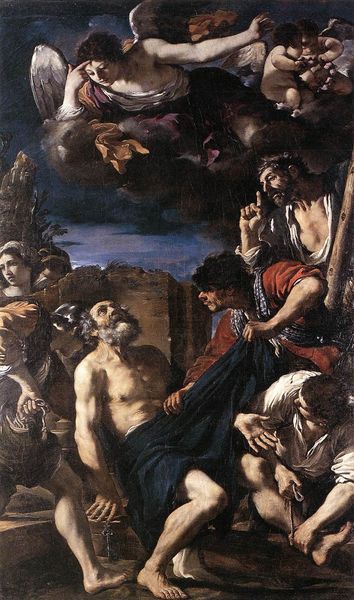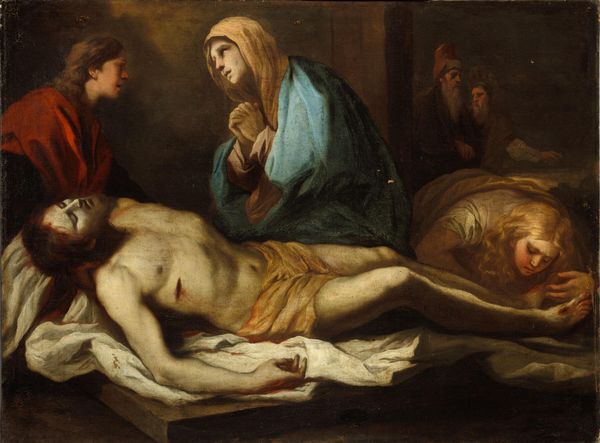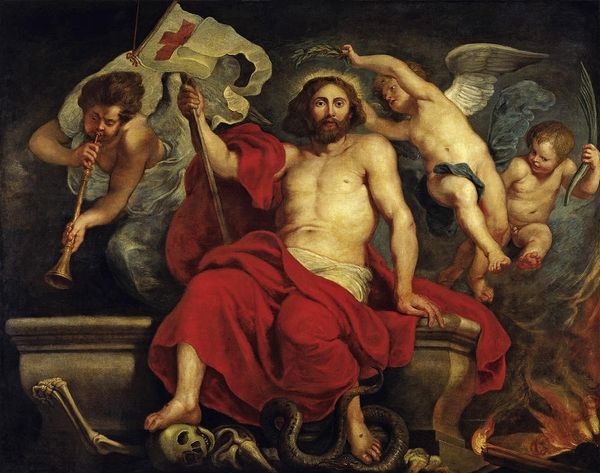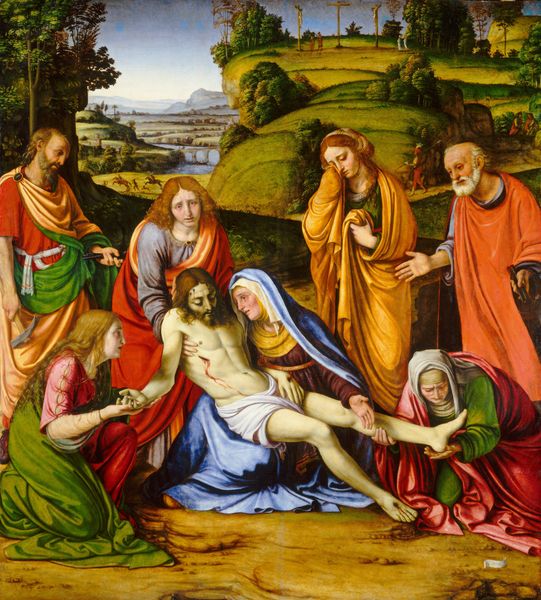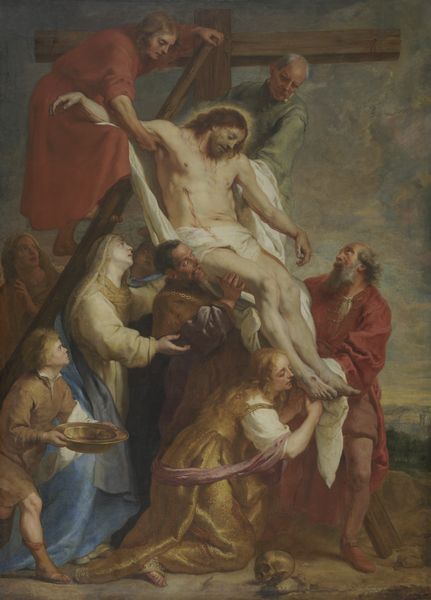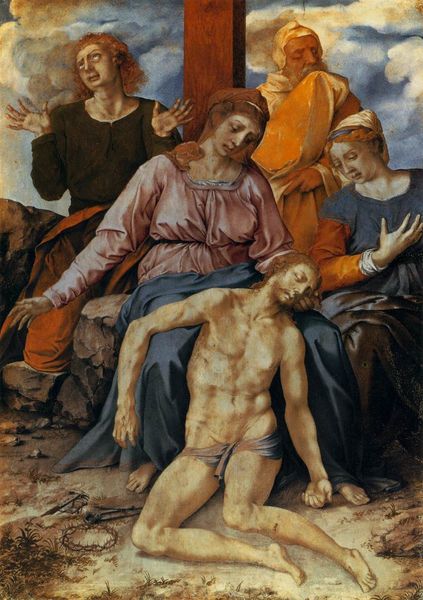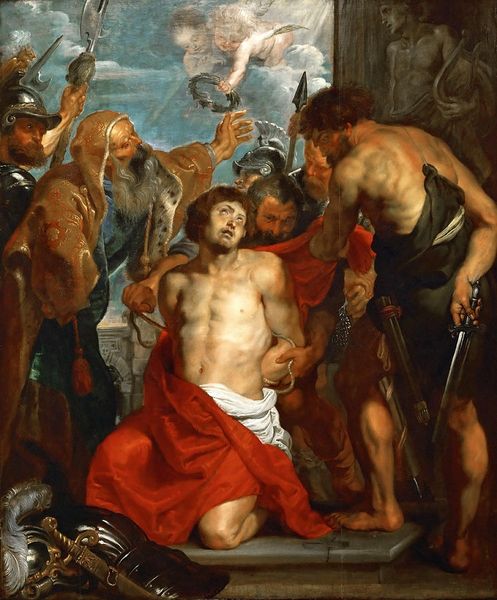
oil-paint
#
venetian-painting
#
allegory
#
baroque
#
oil-paint
#
figuration
#
oil painting
#
mythology
#
history-painting
#
italian-renaissance
Copyright: Public domain
Curator: This is "La Piedad," an oil painting currently housed in the Museo del Prado in Madrid. Though undated, it's attributed to Palma il Giovane. What strikes you initially? Editor: Darkness. Utter darkness, like grief made visual. The figures huddle together, but there’s no warmth, just this profound absence of light that feels heavy. Curator: Indeed. That somber tonality sets the stage. The composition centers, of course, on the body of Christ, surrounded by mourners, each a symbol of suffering and devotion. Notice the barren landscape—almost allegorical. Editor: Absolutely, there's that immediate read of it being religious iconography. The Virgin Mary clutching her son evokes centuries of similar depictions. But what stands out to me is the theatricality of the scene. Those exaggerated gestures—the upturned hands, the bowed heads—it feels more staged than felt. Is that the Venetian style coming through? Curator: It's a fascinating tension, that play between sincere grief and Baroque drama. Venetian painting, yes, was known for its theatrical compositions and dynamic use of color, although the colors here are, understandably, muted. Each figure also holds historical weight, echoing established ways of representing sorrow. Their positioning and clothing speak to collective memory. Editor: I'm drawn to the single bare foot. All that art historical posing, all that sorrow carefully placed…and then a very human, very vulnerable foot peeking out. It grounds the whole thing, doesn’t it? Curator: A poignant observation. It introduces a note of palpable human frailty into an otherwise highly symbolic presentation of suffering, speaking to the idea of sacrifice, while making that very foot look very very mortal. Palma layers meanings expertly. Editor: Looking again at those upturned hands I first wrote off as theatrics…now I see they're also echoing abandonment and maybe even supplication? As though pleading with an absent god. Suddenly, those gestures feel complex and contradictory and speak to multiple messages. Curator: That ambivalence, I think, is key. These images resonate over time because they capture our own complicated relationships to faith, grief, and remembrance. Palma il Giovane leaves space for those personal readings within a known iconography. Editor: Leaving with much more than sorrow today, for sure! And you, dear Palma il Giovane, knew the score about the depths that art could plumb. Thanks for giving a very literal expression to complex human feelings. Curator: A final thought to take with us: grief echoes, symbols endure, but the human connection—as your foot pointed out—remains stubbornly present.
Comments
No comments
Be the first to comment and join the conversation on the ultimate creative platform.
